Does the Use of a Low Back Support or Brace Really Make a Difference?
To download a copy of this week’s newsletter, please click here.
Clear Lake Chiropractor Comments: “Do you think a back brace will help my condition?” This is a question that is frequently asked of many health care providers who treat low back pain. The answers typically vary, as there is support for and against the use of a brace when low back pain is present.
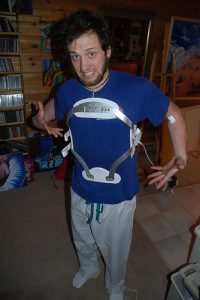
The use of back braces had been considered a “standard” in the treatment of patients with LBP for many years. One argument against using back braces centers around becoming “dependent” either physically or mentally on its use and this has long been a concern among health care providers. Braces are particularly helpful when the patient cannot stop performing needed activities, such as work. The brace helps to reinforce proper bending and lifting by minimizing rotation and side bending. The patient needs to also take breaks from the brace when it is not needed or during periods of rest. Ultimately most people will not need the brace as the problem is resolved and supporting muscles are developed to prevent aggravation.
There are many types of back braces. Some are narrow and are particularly favored when frequent bending and/or twisting movements are required by a job, sport, or other daily activity. Other braces are taller in the back and taper in the front, which give better support but still allow some bending / twisting movements. Some braces are more rigid and can actually stop movement in certain directions. These types include a hard, rigid surface that is placed in the area of the back where movement is not desired. These are used at times when there are fractures of the spine, after spinal surgery and in scoliosis bracing. Some braces are to be worn low on the pelvis to support that area, while most are placed in the center of the low back region. There are also rib belts sometimes used when ribs fracture, soft and rigid neck braces sometimes used after car accidents, and braces for the arms or legs. The decision to use a brace rests on the degree of injury and the patient’s ability to avoid certain activities or positions. When the injury is significant and/or the patient cannot control his/her activities (such as work), then the use of a brace may be one of the most important treatment approaches for that patient. It’s similar to having stitches when a deep or wide cut occurs. Ask us about the use of supports, braces, or belts if you or your family or friends are suffering with low back pain.
Dr. Ward Beecher practices at Beecher Chiropractic Clinic at 1001 Pineloch, Ste 700 Houston, TX 77062. You can schedule an appointment at BeecherChiropractic.com or by calling (281) 286-1300. If you have any questions regarding this blog, please comment below!
Is Low Back Pain Serious?
To download a copy of this week’s newsletter, please click here.
Clear Lake Doctor of Chiropractic Comments: Back problems can cause a good deal of worry and for good reason. Any problem that doesn’t go away on its own in a reasonable period of time should be a cause for concern. Rarely, severe low back pain can be caused by tumors and other destructive processes, so it’s important to have these serious conditions ruled out with a thorough examination and x-rays or other imaging.
The other serious aspect of back pain, much more common than a spinal cord tumor, is how it can affect your quality of life, often with devastating consequences.
Research has shown how disabling severe back problems can be. In terms of quality of life, the decrease can be even more than that seen with heart and lung problems.
This may not seem correct at first glance, but if you think about a back problem making you unable sit or function at work, or basically being able to enjoy life, then it becomes more understandable.
The trouble is, many of us think lying on the couch will do the trick, or taking aspirin every day is a good long-term solution.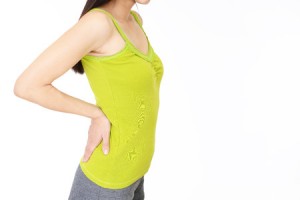
Sprain subluxations that displace the joints of your spine are sometimes referred to as mechanical disorders. These can be detected by analyzing how your spine moves in a precise manner. Sometimes x-rays can show displacements of the lumbar vertebrae or pelvic bones. X-rays are taken from two angles to see the alignment of the spinal joints. X-rays can also show bone destructive or degenerative processes that help to diagnose your problem, and show if adjustments are indicated.
We direct our care at improving the posture and mobility of the spine as a way to speed recovery. We find that just addressing the pain with medications or adhering to strict bed rest can be counter productive. The adjustments are applied in a careful and specific manner. As the loads on the spine are more equalized and as joints begin to exhibit more flexibility, the body is placed in a more optimal environment for healing. Since self-care is also integral to our approach, we will encourage proper stretching and exercises to help maintain and extend what we can do in the clinic.
Dr. Ward Beecher practices at Beecher Chiropractic Clinic at 1001 Pineloch, Ste 700 Houston, TX 77062. You can schedule an appointment at BeecherChiropractic.com or by calling (281) 286-1300. If you have any questions regarding this blog, please comment below!
Have You Lost Work Time Because of Your Low Back Pain?
To download a copy of this week’s newsletter, please click here.
Bay Area Chiropractor Comments: “I can’t believe how much my low back hurts! I don’t know if I can go to work with it like this!” Does this sound familiar? Have you ever missed work because of low back pain? Well, if you have, you’re certainly not alone! In fact, over 80% of the general population seeks some type of health care provision at some point in life because of low back pain and many of those lose work time. Lost work time is often associated with not being able to tolerate certain positions such as prolonged sitting, standing, bending, twisting, reaching, or combinations of these. Sometimes, just getting to work is next to impossible as the car ride alone may intolerable! There is nothing more depressing than not being able to move due to the sharp knife-like feeling in the back every time you try to change positions. 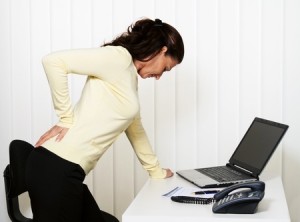
However, it’s one thing to lose a day or two or even a week of work but what about those that can’t work for longer time periods, like several weeks or even months? This can become life altering as avoidance of moving for fear of that knife-like sensation in the back can quickly lead to muscle weakening, weight gain, lethargy, depression, and a host of other negative residuals. Many articles have been published in the past that tried to identify ways determine early on in the course of back treatment, who might be at greatest risk of not improving or becoming disabled. The term, “yellow flags” has been used to describe such factors and some success in identifying those prone to becoming disabled has been reported. In May 2009, another attempt to identify injured workers who were at risk for becoming disabled or, not being able to return to work for at least 3 months was published. Of the 346 injured workers that were followed for 6 months after the sick leave period began, 47% failed to return to work. There were five questions found to adequately screen those who were not able to return to work or were at greatest risk of becoming disabled. The 5 questions include:
- Do you expect to return to work within 6 months?
- How much does the pain interfere in your daily activities?
- It is not advisable to be physically active?
- Do you feel generally nervous?
- Do you feel generally scared?
The good news is that chiropractic manages these types of acute back pain quicker and better than any other form of health care. This is reflected by the highest percentage of consumers seek chiropractic over any other form of alternative health care for back pain relief according to the May, 2009 issue of Consumer’s Report.
We strive to provide the highest quality care and follow evidence and “best practice” approaches at our clinic and look forward to helping our patients through difficult times like this.
Dr. Ward Beecher practices at Beecher Chiropractic Clinic at 1001 Pineloch, Ste 700 Houston, TX 77062. You can schedule an appointment at BeecherChiropractic.com or by calling (281) 286-1300. If you have any questions regarding this blog, please comment below!
Low Back Pain and the Hamstrings
To download a copy of this week’s newsletter, please click here.
Houston Chiropractor Comments: Have you ever considered how important your hamstrings muscles are in relationship to the low back? Most people do not think about those tight muscles on the back of the upper leg / thigh as having much to do with low back pain (LBP). However, it is one of the most important muscles groups to keep loose both as a means of improving current low back trouble as well as preventing future LBP. Think of the hamstrings as a stabilizing guide wire that keeps us upright. When we bend over with our knees straight, we can feel the hamstrings gradually tighten, often limiting us from reaching our toes. When the hamstrings are too tight, some of us can hardly reach past our kneecaps as we bend over. We then (unconsciously) bend our knees to put slack in the hamstrings so we can easily reach the floor.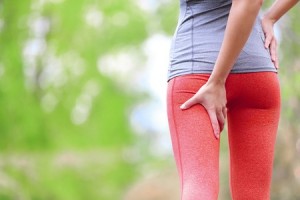
The low back is only so flexible and in reality, most of our ability to touch our toes comes from our hip joints. In fact, after scoliosis surgery where metal rods are placed on both sides of the spine, these patients will often make up for the loss of low back movement by increasing hip motion and still be able to touch their toes! This, however, can only be accomplished if the hamstrings are stretched to a point of allowing the hips and pelvis to rotate forwards when bending with the knees straight.
So, what happens if the hamstrings are too tight? Think of a young sapling tree branch versus an old oak branch. When bending the two branches, the young sapling can easily bend, while the old oak branch breaks early into the process. Similarly, as we bend over to lift a box, when the back and leg muscles, ligaments, and tendons are tight, something has to give or “break,” similar to the old oak branch. The “weak link” in the injured person bending over may be a disc that ruptures, ligaments and/or muscle tendons that overstretch and tear. By keeping the hamstrings loose (like the young sapling branch), much less force is placed on the spine because the pelvis can rock forwards during the bending process, thus unloading the spine. Another way to look at it is that when the hamstrings are too tight, something else has to be correspondingly loose to make up for the tight hamstrings or else the task of bending forwards and performing daily tasks will be limited.
Tissues in our back are injured when forces exceed their capacity to withstand the load. By keeping our hamstrings stretched, we reduce the need for our spine to have to make up for the tightness; thus both preventing a new injury, as well as perpetuating a current problem. The best way stretch the hamstring’s is to sit down on the ground with one leg out straight and the other heel pulled towards your groin. Try and touch your toes with the toes pointed out, up and then in. Maintain that position for at least 10 and then switch legs and do it 3 times each side. Because the hamstrings tighten up during sleep, it’s usually best to perform the stretch in the morning. Repeating this multiple times a day may be required to obtain proper hamstring muscle length. Exercise training is a routine part of chiropractic care!
If you, your family, or a friend is struggling with low back pain, sharing this information may be one of the greatest acts of kindness you can give to that person. At this clinic, we strive to provide the highest quality care and follow evidence and “best practice” approaches. We greatly appreciate the trust that our patients place in us and our services as we help them recover as well as teach ways to prevent future LBP episodes.
Dr. Ward Beecher practices at his Houston Chiropractic Clinic at 1001 Pineloch, Ste 700 Houston, TX 77062. You can schedule an appointment at BeecherChiropractic.com or by calling (281) 286-1300. If you have any questions regarding this blog, please comment below!
Low Back Pain and its Many Causes
To download a copy of this week’s newsletter, please click here.
Clear Lake City Doctor of Chiropractic comments: Low back pain (LBP) is one of the most common complaints presenting to our office and remains one of the most challenging conditions to manage because there are so many causes of LBP. Some of the causes include the obvious such as over lifting, over use activities such as sports injuries (bowling, golfing, skiing, tennis, football, 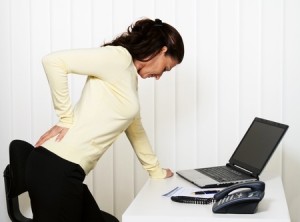 etc.), raking leaves, shoveling mulch, and more. Frequently, work related strains are the primary cause of LBP due to the constant, persistent and awkward positions frequently required in many jobs, especially in repetitive motion assembly line work.
etc.), raking leaves, shoveling mulch, and more. Frequently, work related strains are the primary cause of LBP due to the constant, persistent and awkward positions frequently required in many jobs, especially in repetitive motion assembly line work.
The cause can also be as simple as standing on 2 feet vs. 4 feet. Studies show when 2 legged and 4 legged animals are compared, arthritis starts in the 3rd vs. the 6th decade of life, respectively due to the vertical load placed on the biped or 2-legged animal. In spite of this, after sharing this information with patients, I have not been successful in convincing them to start walking on all fours! Because we are a 2-legged species, addressing a short leg can have significant benefits to any spinal condition. This is because a short leg of only 5mm (1/4 inch) can result in a drop in the pelvis resulting in crooked foundation that the spine sits on, creating a curvature in the spine. This places stress on the spinal components including the spinal cord and nerves and can contribute or be the actual cause of not only LBP, but also problems higher in the spine including neck pain and headaches!
Every now and then a satisfying outcome is not achieved until I address the leg length issue by the use of heel or a combination of heel & sole lifts. If a leg is short, the effects at the top – that is, the neck and head, are dramatically affected. In one case, treatment to the neck and head had little effect on his headaches and only after placing a heel lift in one shoe and arch support in both shoes did he feel significantly improved.
In most cases, treatment addressing the entire body from the feet up yields the most satisfying results. Also, secondary issues such as diet, stress management, home treatments including exercises, can be very important in the successful management of back pain. In many patients, a combination of chiropractic, leg length correction, and nutritional management including the use of vitamin and herbs resulted in the best approach results.
Usually, offering the patient advice on the methods of applying ice, modifying/reducing bending/ lifting activities, as well as performing the chiropractic treatment will satisfy the majority of patients. However, in some cases, co-management with other allied health care providers is necessary, especially where there is a slow response in the initial acute stage of LBP. If these less common cases should occur, the combination of chiropractic and primary care yields the best results.
Dr. Ward Beecher practices at Beecher Chiropractic Clinic at 1001 Pineloch, Ste 700 Houston, TX 77062. You can schedule an appointment at BeecherChiropractic.com or by calling (281) 286-1300. If you have any questions regarding this blog, please comment below!

